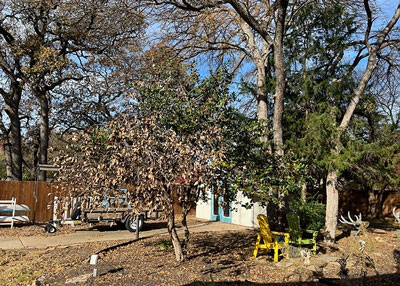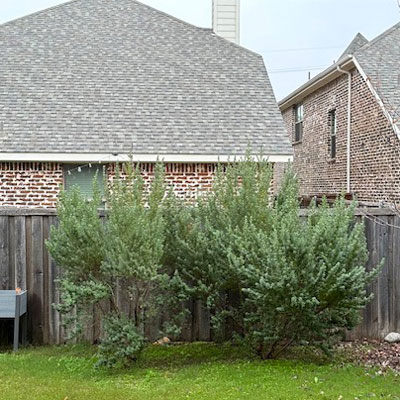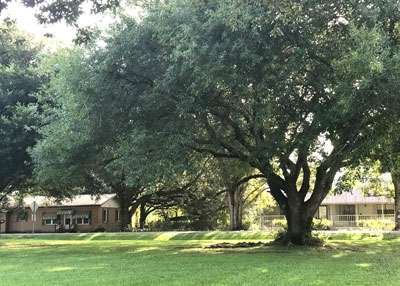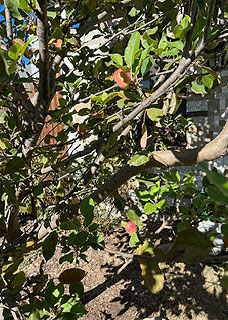Q&A – Ask Neil: December 14, 2023
(Please read these instructions carefully.)
Before you post your question, please look at recent issues to see if someone else has already asked it. You might find your answer there.
How to submit your question…
(Note: You may need to allow a pop-up window to come up in order to get the link for sending your photo(s). If you have already submitted your question and didn’t see the pop-up window, please click here.)
• Click the link provided below to post your question. After you submit your question, a new window will pop up giving you the address to which you can e-mail a SHARP, HIGH-RESOLUTION PHOTO to accompany your question. Please DO NOT SEND THUMBNAIL PHOTOS in case I need to zoom in to see things.
• Click here to post your question.
• Please ONLY POST YOUR QUESTION ONE TIME. We can only accept a set number of questions each week, and when we get duplicates it costs other people their chances.
• One question per reader, please.
• Please use this only for posting questions – not for standard emails.
• Watch for your answer in the following week’s e-gardens.
• I choose those of greatest general interest. For example, plant IDs seldom make the cut.
• I must have your first name or initials.
• I must have your city or county. (Texas is a very large state.)
QUESTION 1
WHY WOULD PART OF THIS LARGE HOLLY DIE?
Question: What would cause only part of this large holly to die? It is at least 10 years old, and we removed more of the bottom branches than usual this year. Would that be a problem? Could it be drought? If so, that’s the only thing in the yard that died. Kathleen G., Keller.

Answer: Guaranteed drought. Pruning has nothing to do with it. Sadly, I saw tons of hollies that looked just like this. The unfortunate thing for them, as great as they are, is that they don’t wilt conspicuously like most other plants do, so they can pass the point of no return without gardeners even being aware of it. And, as far as its being the only plant that died, something had to go first, and it was the unlucky one.
QUESTION 2
IS THERE A TRULY COMPACT TEXAS SAGE? CAN THESE BE TRIMMED?
Question: I love Texas sage, but they get so tall. This one was labeled as “compact” Texas sage. They did really well during the summer, but now I need to prune them back next spring. Can I trim them way back? Is there truly a compact Texas sage? Shannon B., Coppell.

Answer: “Compact” Texas sage shouldn’t get more than 42 to 48 inches tall. It looks like you may have gotten mislabeled plants. If you want to prune these, that should be done in late winter (early to mid-February in Coppell) so that they can grow out in the spring. Use lopping shears, not hedge trimmers, to maintain a natural shape.
QUESTION 3
OUR ARIZONA ASH IS 39 YEARS OLD.
Question: I always wanted to send you a photo of our Arizona ash down in Youngsville, LA. We planted it in 1984 as a seedling when we moved onto the property. You’ve said they average 25 years, but not sure if you’re referring to North Texas. This one is 39 years old. See you sir! Jack G., Collin.

Answer: OK. It’s a lovely tree. (Which they can be.) But your sample size is rather small. (One tree.) My “average” statement is based on a lifetime (since I planted them as a teenager) of watching probably 10,000 trees. I’ve seen hundreds of them die within 5 years due to borers. (and that’s not even the new-to-Louisiana-and-East-Texas Emerald ash borers). I’ve seen one that I know lived 39 years. (Your tree.) Others that probably lived longer. But, as with any living species’ average life expectancy, it’s going to be made up of a lot of individuals that don’t make it to the average. I am still quite unwilling to recommend Arizona ash as a landscape tree for Texas or Louisiana.
QUESTION 4
WHY DOES MY ANNA APPLE HAVE FRUIT NOW?
Question: Why does my Anna apple tree have apples now? Once the heat of summer passed, there were buds again. I had a poor crop earlier this year because of the warm temperatures in January. It budded out and then the freeze came. Will this affect its spring budding? Erin V., Celina.

Answer: I have some bad news for you. Anna apples have very low chilling requirements (200-300 hours). They were bred to be grown in areas that rarely get any freezing weather (South Texas). When Anna is exposed to that number of hours between 32 and 45 degrees, it will have its winter needs met. With the first warm spell it will come into bloom. In Celina that’s always going to happen in January – long before the last freeze date. It would be a miracle if you ever got any fruit on that variety as far north as you are. It should never be sold in your area. You need a variety with a 750- to 800-hour chilling requirement. The best types of North Central Texas include Gala, Jonagold, Fuji, and Mollie’s Delicious. You will want two different varieties to ensure cross-pollination. In all honesty, apples are a challenging crop in the Blackland soils of North Texas.
As for the second season of fruit in the fall, that happens because the tree has gone dormant in the heat of the summer. It comes out of that dormancy and reacts by blooming. You’ll see it happening with other varieties of apples, also pears, azaleas, wisterias, and Carolina jessamine, among others.
(I’m curious why your apple still has so many leaves. I’m assuming this isn’t a current photo.)
QUESTION 5
IS THERE A TYPE OF OAKLEAF HYDRANGEA THAT IS MORE DEER-PROOF?
Question: We have big issues with deer here. I have heard of a selection of Oakleaf hydrangeas with fuzzy leaves that is resistant to them. Do you know anything about it? Don, Austin.
Answer: Don called my statewide radio program last Saturday. I told him I was unaware of such a cultivar or even that claim, but that I would do my homework and report back here. (He does subscribe to e-gardens.)
So, I did my Web searching. My first match was to what appeared to be a promising website (hydrangea.com), where the author says:
“Say farewell to the flowers: Oakleaf hydrangea
Oakleaf hydrangeas (H. quercifolia) are native to North America and boast fabulous foliage as well as flowers. Those big, bodacious blooms give off a sweet honey scent, and attract pollinators – unless the deer get them first, and that’s typically what happens in my garden. While some of the plants in my yard are mature enough that deer can’t reach the topmost blooms, they do take off all of the flower buds within browsing range, if not during winter, than certainly in spring when the buds begin to develop. It’s disappointing, for sure, but since oakleaf hydrangeas also offer beautiful fall color and a striking habit with dramatically peeling bark, they still contribute plenty of interest to be worth keeping around.
I have noticed that my Gatsby Pink oakleaf hydrangea manages to put on subsequent blooms later in the summer, and the deer usually leave these alone, so that variety might be worth a closer look to my fellow deer-ridden hydrangea gardeners.”
Another website (a-z-animals.com) seems to disagree to a small extent, saying:
“Deer and hydrangeas have a complex relationship. Deer are opportunistic feeders who consume a wide range of plants, including hydrangeas, if they are hungry enough. Furthermore, some varieties are less appealing to deer due to taste, texture, or scent. For example, oakleaf hydrangeas, or Hydrangea quercifolia, and panicle hydrangea, Hydrangea paniculata, are least likely to be browsed.”
For what it’s worth, that site continues on to give 9 tips to discouraging deer, but most of them are pretty standard: repellents, noise-making or motion-activated devices, etc. I did see the suggestion of planting native plants known to be left alone by deer to take advantage of their own defense mechanisms, whatever they may be.
The respected Fine Gardening Magazine asks, “Which hydrangeas are deer-proof?”
And then they answer in the next sentence:
“The simplest answer to this question is “None.” However, some species tend to be favored by deer over others.”
Wondering where you might have gotten the information you had, I found this in their story:
“Rough-leaved hydrangea (Hydrangea aspera and cvs., Zones 7–10)
Although less common in gardens, the rough-leaved hydrangea is another option for folks in deer country. The foliage is covered in coarse hairs that give the entire shrub a texture like sandpaper. As you can imagine, this makes it not exactly ideal for munching on. Much like other plants with fuzzy textures that are supposedly deer resistant (think lambs’ ears), this trait puts rough-leaved hydrangea firmly in the “might not browse” category.”
But that’s not Oakleaf hydrangea.
Then, next up in their story, “Hydrangeas Deer Love to Eat”
I’ll close with this quote:
“Oakleaf hydrangea (Hydrangea quercifolia and cvs., Zones 5–9)
Unlike their fellow native cousins the smooth hydrangeas, oakleaf hydrangeas are readily browsed by deer in midspring. This may be because they are the first type of hydrangea in many areas to bloom, so when those large columnar flowers begin appearing, they’re irresistible to deer. The one saving grace is that the browsing tends to stop at the flower buds because this shrub has rough, woody stems covered in peeling bark that deer tend to stay away from. Oakleaf hydrangeas bloom off old wood, so once the flowers are eaten, no additional buds will appear until next year.”
It appears that unless you have an enclosed shady patio area or entryway atrium, this is not going to be a plant that you will enjoy nearly as much as your deer will. If it’s any consolation, Oakleaf hydrageas really need acidic soils and irrigation water, and Austin is lacking both of those, so iron deficiency might haunt you anyway.
I’m sorry for the bad news, but I appreciate your listening and reading. I love this plant, too, and we now have deer visiting our property. I guess I’d better get ready.
